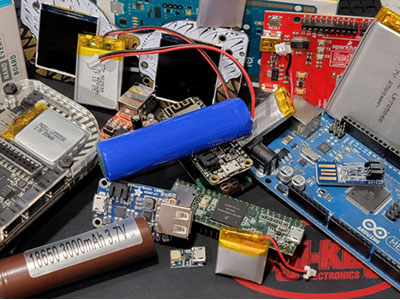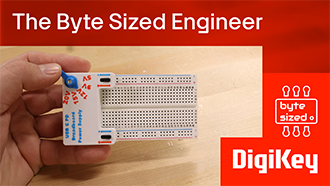Benchtop Power Supply Basics You Need to Know
2025-09-02 | By bekathwia
Today, we’re learning about benchtop power supplies. First off, what is it? A benchtop power supply provides adjustable and reliable DC power to your electronics projects. Unlike standard AC adapters and battery packs, a benchtop power supply lets you set the voltage and current to precisely what your circuit needs. The key features to look for are the number of channels and the maximum output values for voltage, current, and power.

Here is a basic benchtop power supply. It has adjustable voltage and current knobs, a digital display to show what's going on, and terminals where you connect your wires. You’ll also notice a mode indicator, which switches between constant voltage (CV) and constant current (CC) modes. More on the modes below.
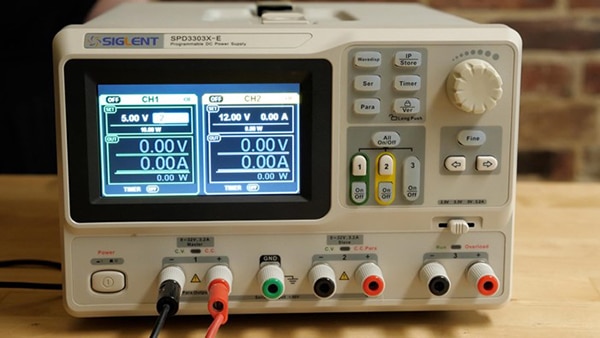
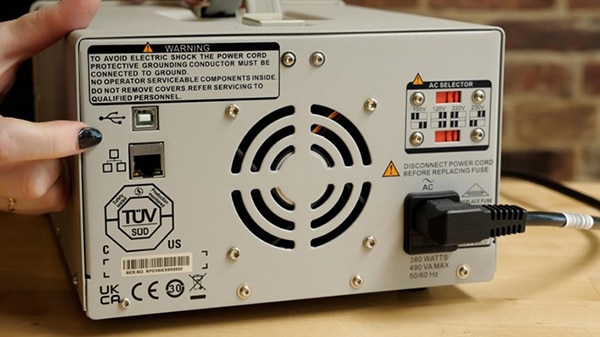
Most control knobs will have a coarse adjustment and a fine adjustment, which makes it easier to dial in your precise settings without overloading anything. Some higher-end models may include features like USB ports for computer connectivity, programmable settings for repeated tasks, or multiple isolated outputs for more complex projects. These features can be helpful if you’re working on advanced projects.
.gif?la=en&ts=edac13b5-d91d-4a92-b9b8-67030a39269d)
Now, let’s talk about what you can do with a benchtop power supply. It’s particularly convenient for testing and prototyping circuits. Adjust the dials to achieve your desired voltage and current. When you’re experimenting, you can test LEDs, motors, and other components at various voltages to see how they perform.
Benchtop power supplies also have built-in protection against overcurrent and overvoltage, which is useful for debugging short circuits without damaging your components.

Constant Voltage vs. Constant Current
Next up, let’s break down the modes we mentioned earlier: Constant Voltage (CV) and Constant Current (CC).
In CV mode, the power supply maintains a steady voltage, and the current varies depending on the load. It’s how you’ve probably learned to expect things to work if you’ve ever used an AC adapter.
In CC mode, the supply limits the current to a set value, and the voltage drops as needed. This is super useful for charging batteries or protecting delicate components from overcurrent.

Benchtop power supplies are great for charging batteries and can even revive dead rechargeable batteries that have been over-discharged. This includes those old cordless power tool batteries you may have tucked away somewhere. You start in constant current mode, then switch to constant voltage mode once the target voltage is reached. Be sure to match the settings with the specs of your battery.
Benchtop Power Supply tips to get you started:
Always set current limits first.
Turn the current knob to the minimum before powering up, then increase as needed. This prevents accidental overloads when powering up a new, untested circuit.
Double-check your polarity.
Positive and negative terminals matter. Getting it wrong could damage your circuit.
Start low and go slow.
If your circuit needs variable voltage, begin with a low voltage and increase gradually while monitoring your circuit’s behavior. Every power supply is different, so I recommend reading the manual to familiarize yourself with yours.
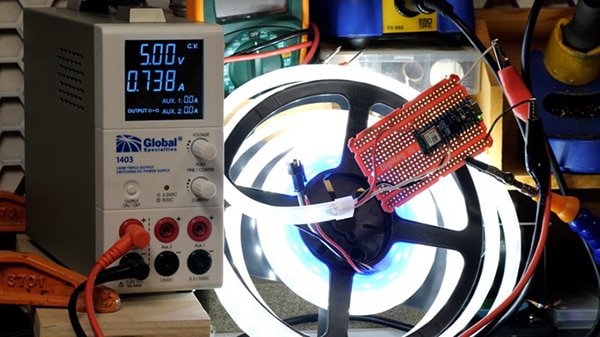
More Benchtop Power Supply Use Cases:
One useful thing you can do with a benchtop power supply is detect your circuit’s current draw in order to pick an appropriate battery. Say you program a fun LED animation, and you want the absolute smallest battery possible– since you’re not driving the LEDs at full brightness all the time, they won’t pull the max current that can be found in the datasheet; it will be much less in practice. So, you can measure how much power your code saves by using CV mode while your code runs and watch the current readout. Then multiply the milliamps times the number of hours you want it to run, add 20-30% for safety headroom, and you have the battery size in milliamp-hours.
So, using a benchtop power supply provides valuable feedback during development that can speed up and increase the precision of the design process.
Another handy use for benchtop power supplies is simulating power conditions. Let’s say you’re designing a device and want to know how it will perform with a weak power source. You can use the power supply to test your circuit's behavior under those conditions by varying the voltage or introducing limits.
Common questions about benchtop power supplies:
How much power can it deliver?
It will depend on the model. Most hobbyist supplies will handle zero to twenty volts and up to three to five amps. And if it has more than one channel, they might each have lower specs and the ability to stack into a single channel that provides the maximum output.
What happens if I short the output?
Good-quality supplies have overcurrent protection. They’ll enter CC mode or shut down to prevent damage.
What’s Ripple and Noise?
When you’re shopping for a benchtop power supply, look for low ripple and noise. Ripple is an artifact from rectifying AC input to a steady DC voltage, and noise is random fluctuations transferred from the input or introduced by ambient electromagnetic fields. The max peak-to-peak voltage is the maximum variation from the DC setpoint and should be measured in millivolts on a good supply.
And there you have it– a beginner’s guide to benchtop power supplies! I hope this gives you the confidence to start using one in your projects.










